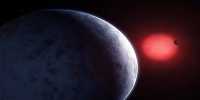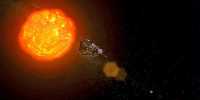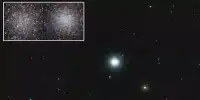Astronomers have observed that the farthest galaxy is still driven by air from its supermassive black hole. Light from this object came 13.1 billion years ago. This is only 670 million years after the Big Bang and 100 million years more than the previous record holder. As published in the Astrophysical Journal, the discovery was made possible by the Atacama Large Millimeter / Submillimeter Array (ALMA). The galaxy, HSC J124353.93 + 010038.5 (abbreviated J1243 + 0100) has a supermassive black hole at its center.
This is thought to be the case for almost every galaxy in the universe, and astronomers have determined the relationship between the size of a supermassive black hole and the size of its galaxies, although the scales considered are relatively different. The key to understanding the process in this connection is related to the feeding process of black holes. When enough material enters the interior of the galaxy, a supermassive black hole begins to consume large amounts of matter. This type of substance will move at high speeds emitting intense energy which may result in pushing some of the surrounding matter outwards.
This is the beginning of this galactic wind, which could lead to the formation of a new star that would change the galaxy for a long time. J1243 + 0100 is currently the first example of this type of wind. Lead author Takuma Izumi, from the National Astronomical Observatory of Japan (NAOJ), said in a statement, “The question is, when did galactic winds come into existence in the universe?”
“This is an important question because it relates to an important problem in astronomy: how did galaxies and supermassive black holes coexist?” Thanks to ALMA, the team was able to study the motion of gas in the galaxy beyond the emission of air. The mass ratio observed in this ultra-distant galaxy is similar to that observed by astronomers in the recent universe, which provided some important clues about the mechanism behind the supermassive black hole-galaxy connection.
“Our observations support recent high-precision computer simulations that predict that there was a contemporary relationship about 13 billion years ago.” “We plan to observe such a large number of objects in the future, and hopefully clarify whether the primitive covolution seen in this matter is an accurate picture of the general universe of that time.” The central region of the galaxy was estimated to be about 30 billion times the mass of the Sun, of which the black hole was about 1 percent.















